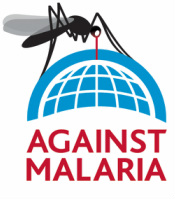The Omnivore’s Dilemma by Michael Pollan
Succulent in both content and style, The Omnivore’s Dilemma is a fascinating tour through our food system that reveals facts as interesting as they are startling. Pollan’s goal was to figure out “What should I eat?” and that question soon leads to another: Where does our food come from?
The book explores that query by examining the industrial food system (corn), the pastoral (grass) and the personal hunting and gathering of food. Pollan wisely displays his (prior) ignorance and incompetence which makes the book more accessible to the reader and serves the tactical purpose of leading someone along thought processes and arguments instead of making overt arguments to which readers might be more resistant. Among others, this occurred for the investigation of the “military industrial corn-plex,” the ethics of eating animals, McDonalds, as well as the issues of organic and sustainability.
The book really underscored the idea that there is a cost, usually not factored in, to our food and it is most often paid in environmental damage. There was so much packed into this 400+ page book that it would take far too long to describe all the fascinating things I learned, so below are just several examples.
- How (and why) cheap corn exists and is used in the industrial food system; and thus why it is beneficial for a farmer to produce more corn when prices go down. Most things you eat are a decent percentage of corn, mainly because of the high-fructose corn syrup.
- That most humans can only eat about 1500 pounds of food per year which means the growth rate of the food industry is (basically) limited to the population growth of a nation. Consequently, the goal of the food industry is to get people to spend more for the food they are eating or to get them to eat more than they need to or should. (The idea of business doing business was not new, but the specific numbers of amount and growth were interesting.)
- The pervasiveness of whisky in the early 19th century (the modern coffee break began as a late-morning whisky break!).
- That smaller, local, pastoral farming can actually be more productive and better for the land (because the outputs are used as inputs and the external energy source of the sun allows growth but laws of physics to hold.
- A one-pound box of organic prewashed lettuce (that is shipped across the USA) cost 57 calories of fossil fuel energy (due to the growing, chilling, washing, packaging and transporting) for every calorie of food. 57:1 ratio!
- “Americans today spend less on food, as a percentage of disposable income, than any other industrialized nation, and probably less than any people in the history of the world.” (p. 243)
- “Supermarkets in Denmark have experimented with adding a second bar code to packages of meat that when scanned at a kiosk in the store brings up on a monitor images of the farm where the meat was raised, as well as detailed information on the particular animal’s genetics, feed, medications, slaughter date, etc.” (p. 244)
Additionally, I quite enjoyed the discussion in the “The Ethics of Eating Animals” (chapter 17) as I’ve thought for a couple years now that my meat eating doesn’t have a moral nor ecological leg to stand on (and I enjoy ethical explorations of behaviour). Further, his description of experience of hunting and killing an animal, from the ecstasy to the revulsion, was very well done.
The only part that was less reasoned was his brief discussion of lunar energy and the possibilities surrounding it; this occurred during the Mushroom section – the weakest part of the book in my opinion.
For those seeking a well-written exploration of their food and where it comes from, you could likely do little better than Pollan’s The Omnivore’s Dilemma.



0 Comments:
Post a Comment
<< Home